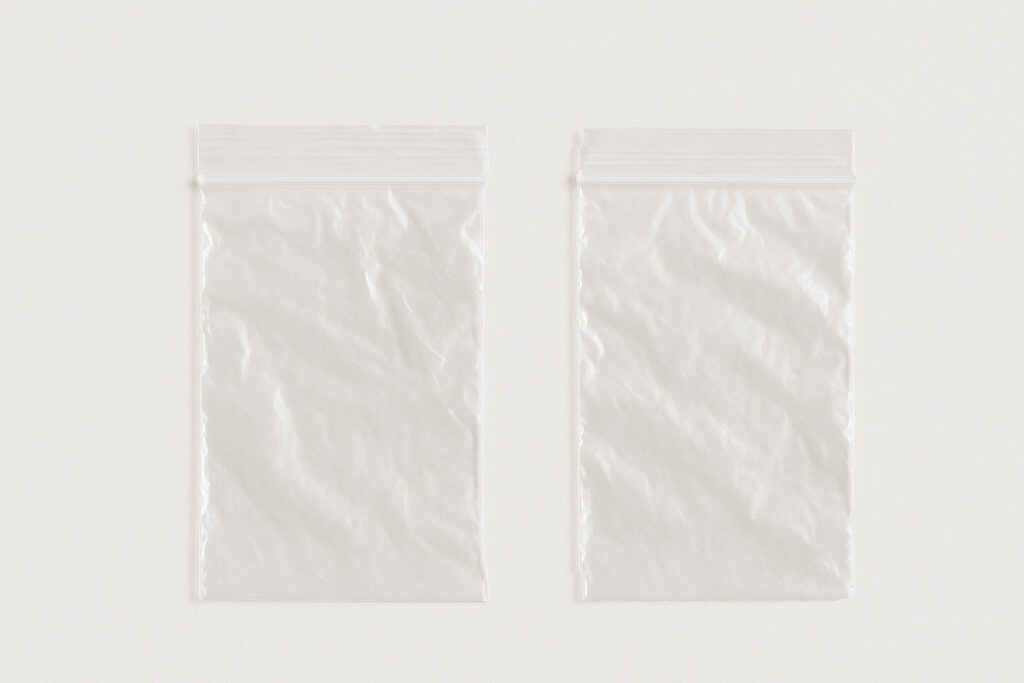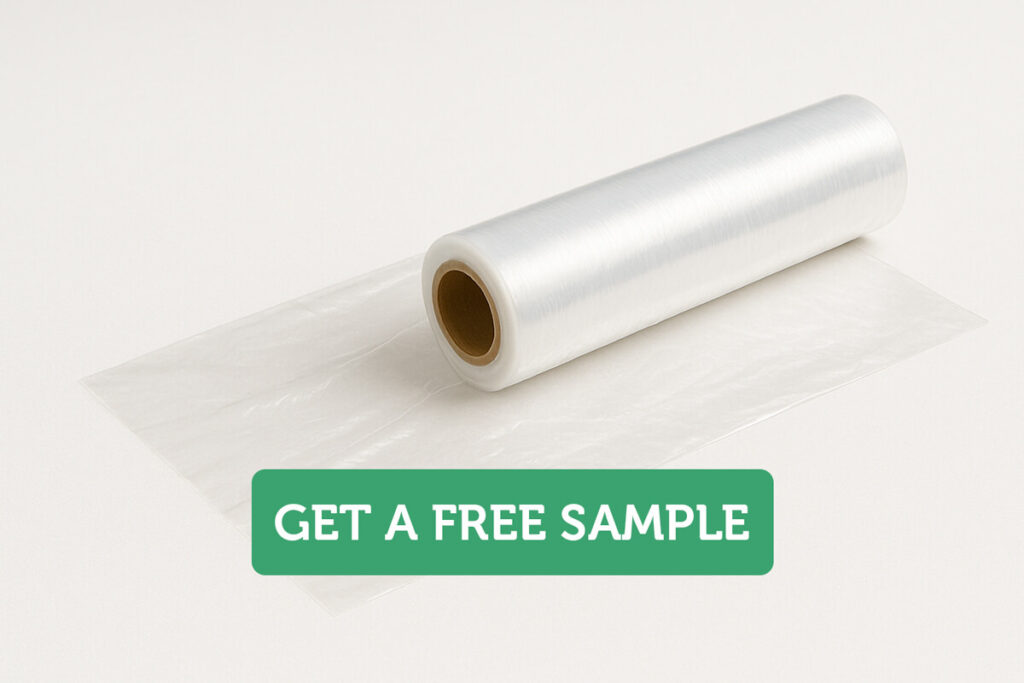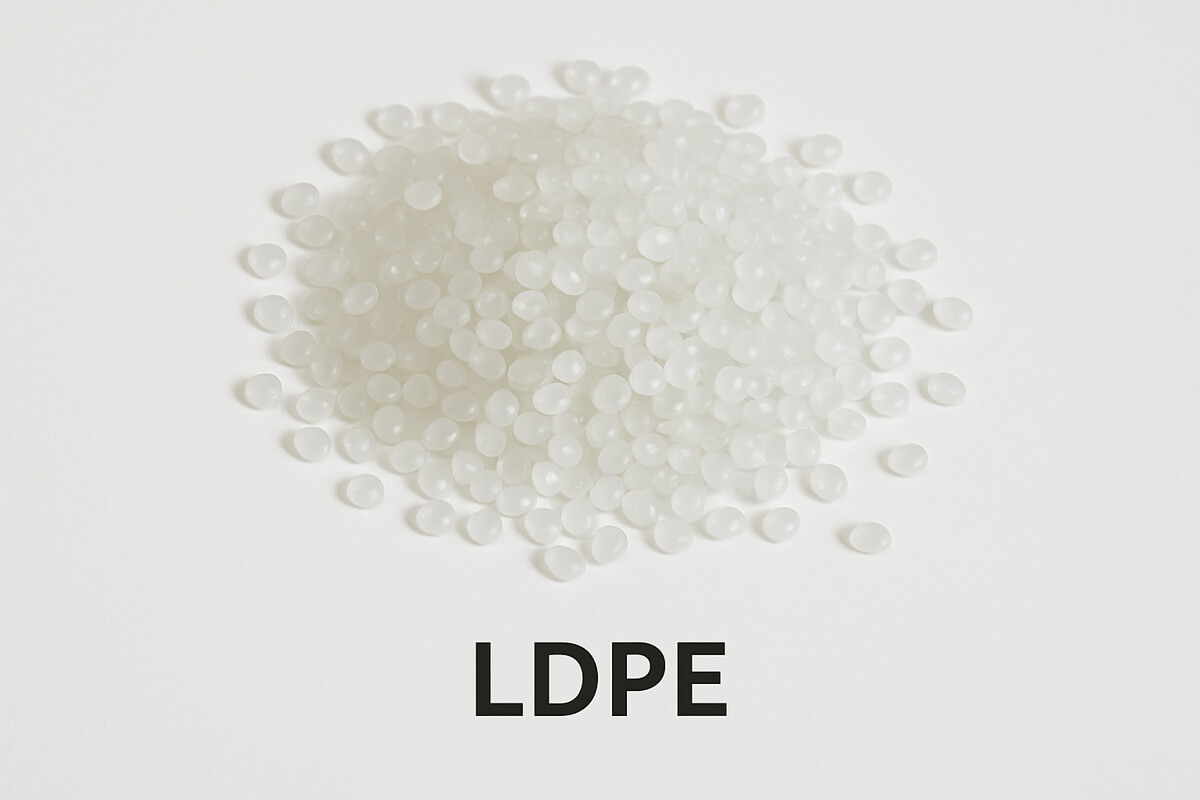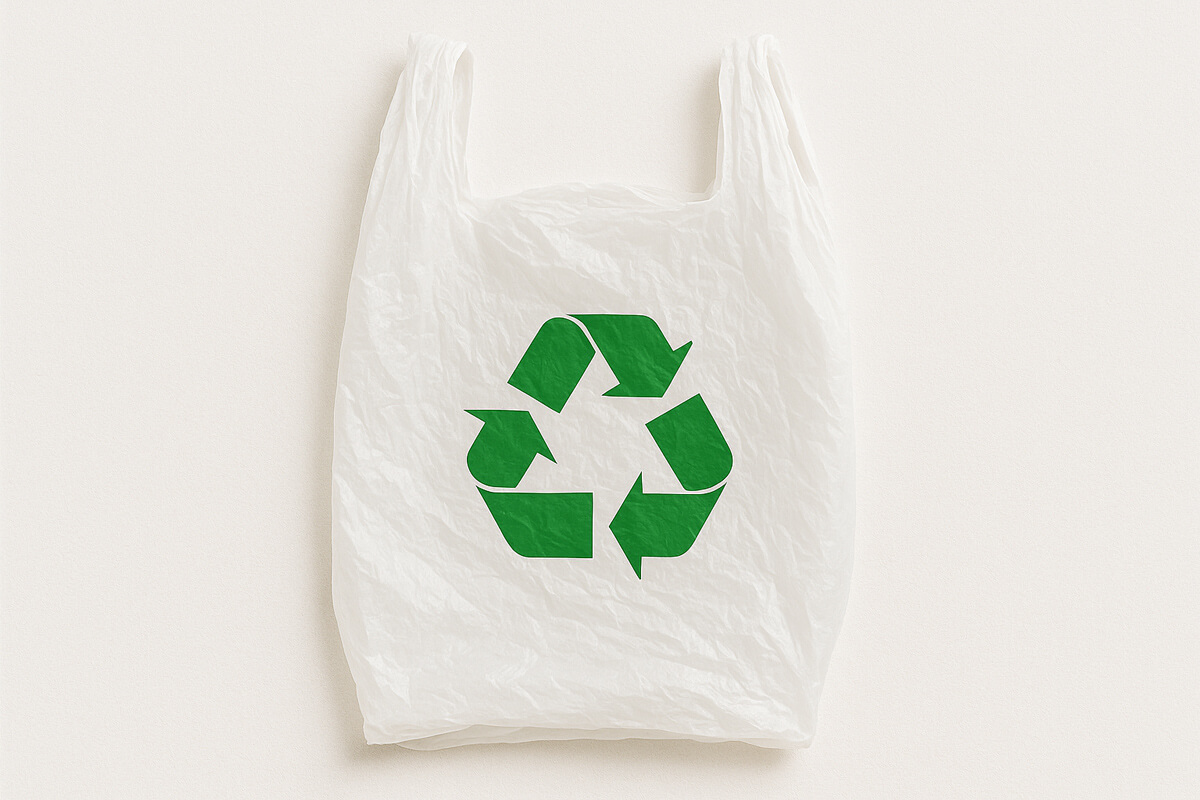Low-density polyethylene, or LDPE, is a material you see and use every day, but you may not know its name. Whether it’s in the bags you carry from the supermarket or the film that keeps food fresh, LDPE is a practical choice for many everyday products. In this article, we explain what LDPE is and where you are most likely to find it in use.
What is LDPE?
Low-Density Polyethylene (LDPE) is a soft, flexible plastic material that you encounter in daily life. LDPE is a thermoplastic, which means it can be heated and reshaped multiple times without breaking down chemically.
LDPE has a density range of 917-930 kg/m³, making it lighter than water. This plastic appears translucent or opaque depending on how it’s processed. The material feels soft and flexible when you touch it, unlike harder plastics such as bottle caps or rigid containers.
The plastic can handle temperatures up to 65°C continuously and 90°C for short periods. LDPE resists many chemicals including acids, alcohols, and bases, making it suitable for various applications. However, it reacts poorly with strong oxidising agents and certain solvents.
LDPE is made from ethylene gas through a high-pressure process called free radical polymerisation. During production, the plastic develops a branched molecular structure. These branches prevent the plastic molecules from packing tightly together, creating the characteristic flexibility and lower density.
You can recognise LDPE in common items such as shopping bags, food wraps, and squeeze bottles. The plastic often feels soft and crinkly when you handle it. Many bread bags, produce bags, and the plastic film covering dry cleaning are made from LDPE.
The material’s flexibility makes it different from High-Density Polyethylene (HDPE), which feels stiffer and is used for items like milk bottles and detergent containers. LDPE bends easily without cracking, whilst HDPE maintains its rigid shape.
LDPE carries the recycling symbol number 4, though it faces recycling challenges compared to other plastics. The material’s lightweight nature and tendency to blow around makes collection and processing more difficult than rigid plastics.
Main uses of LDPE
LDPE’s combination of flexibility, chemical resistance, and moisture barrier properties makes it suitable for many different applications. The material’s ability to stretch without tearing and its resistance to water and chemicals explains why manufacturers choose it for specific products.

Packaging and bags
LDPE dominates the flexible packaging market. Shopping bags, carrier bags, and produce bags in supermarkets are typically made from this material. The plastic’s transparency allows customers to see contents whilst its flexibility prevents tearing when items are placed inside.
Food packaging relies heavily on LDPE because the material provides an effective moisture barrier. Bread bags, frozen food bags, and sandwich bags use LDPE to keep food fresh. The plastic’s safety for food contact applications stems from its chemical stability and resistance to moisture migration.
Manufacturers also use LDPE for industrial packaging applications. The material protects clothing, electronics, and other products during storage and transport. Its ability to conform to irregular shapes whilst maintaining protective qualities makes it valuable for wrapping various items.

Films and sheets
Cling film represents one of LDPE’s most recognisable applications. The material’s ability to cling to surfaces whilst remaining easy to handle makes it ideal for food wrapping. LDPE cling film stretches around containers and maintains its seal without adhesives.
Bubble wrap packaging uses LDPE for both the film and the air-filled bubbles. The material’s toughness prevents punctures during handling whilst its flexibility allows the bubbles to compress and absorb impacts. This protects fragile items during shipping.
Agricultural applications include greenhouse films, mulch films, and silage covers. Farmers choose LDPE because it transmits light effectively whilst protecting crops from weather. The material’s resistance to outdoor conditions and its ability to cover large areas make it practical for agricultural use.
Bottles, containers, and caps
Squeeze bottles for toiletries, condiments, and household products frequently use LDPE. The material’s softness allows users to apply pressure and dispense contents easily. Unlike rigid plastics, LDPE bottles return to their original shape after squeezing.
Laboratory applications include dropper bottles and wash bottles. LDPE’s chemical resistance protects stored liquids from contamination whilst its flexibility allows controlled dispensing. The material doesn’t react with most laboratory chemicals, making it safe for various substances.
Some food containers use LDPE, particularly for oils and liquid products. The material’s moisture resistance prevents contents from spoiling whilst its impact resistance protects against drops and knocks during handling.
Tubing and pipes
Laboratory tubing applications rely on LDPE’s chemical resistance and flexibility. The material transports various fluids without degrading or contaminating them. Its ability to bend around equipment without kinking makes it practical for complex laboratory setups.
Agricultural irrigation systems use LDPE pipes and drip lines extensively. The material’s resistance to outdoor conditions and its flexibility allow installation around obstacles. Farmers can bury LDPE irrigation pipes without worry about cracking from ground movement.
Medical applications include tubing for various devices where flexibility and chemical compatibility are essential. LDPE doesn’t react with most medical fluids and can be sterilised using standard methods.
Other common applications
Medical and cleanroom environments use LDPE for protective equipment including gloves, covers, and packaging for sterile instruments. The material’s cleanliness and ability to form tight seals protect sensitive equipment from contamination.
Snap-on lids for containers often use LDPE because the material’s flexibility allows secure fitting whilst remaining easy to remove. The plastic can deform slightly during installation then return to its original shape to maintain the seal.
Playground equipment sometimes incorporates LDPE components where flexibility and impact resistance are important. The material’s ability to absorb impacts without cracking makes it suitable for children’s play areas.
Battery cases occasionally use LDPE because of its chemical resistance and ability to contain electrolytes safely. The material doesn’t react with battery chemicals whilst providing protection from external impacts.

Choose quality LDPE for your applications
Polythene UK supplies high-quality LDPE materials for manufacturing, packaging, and industrial applications. Our LDPE products meet British and European standards for consistency and performance. Whether you need material for food packaging, industrial films, or specialised applications, we provide reliable supply and technical support. Contact our team to discuss your LDPE requirements and receive product specifications tailored to your specific needs.




